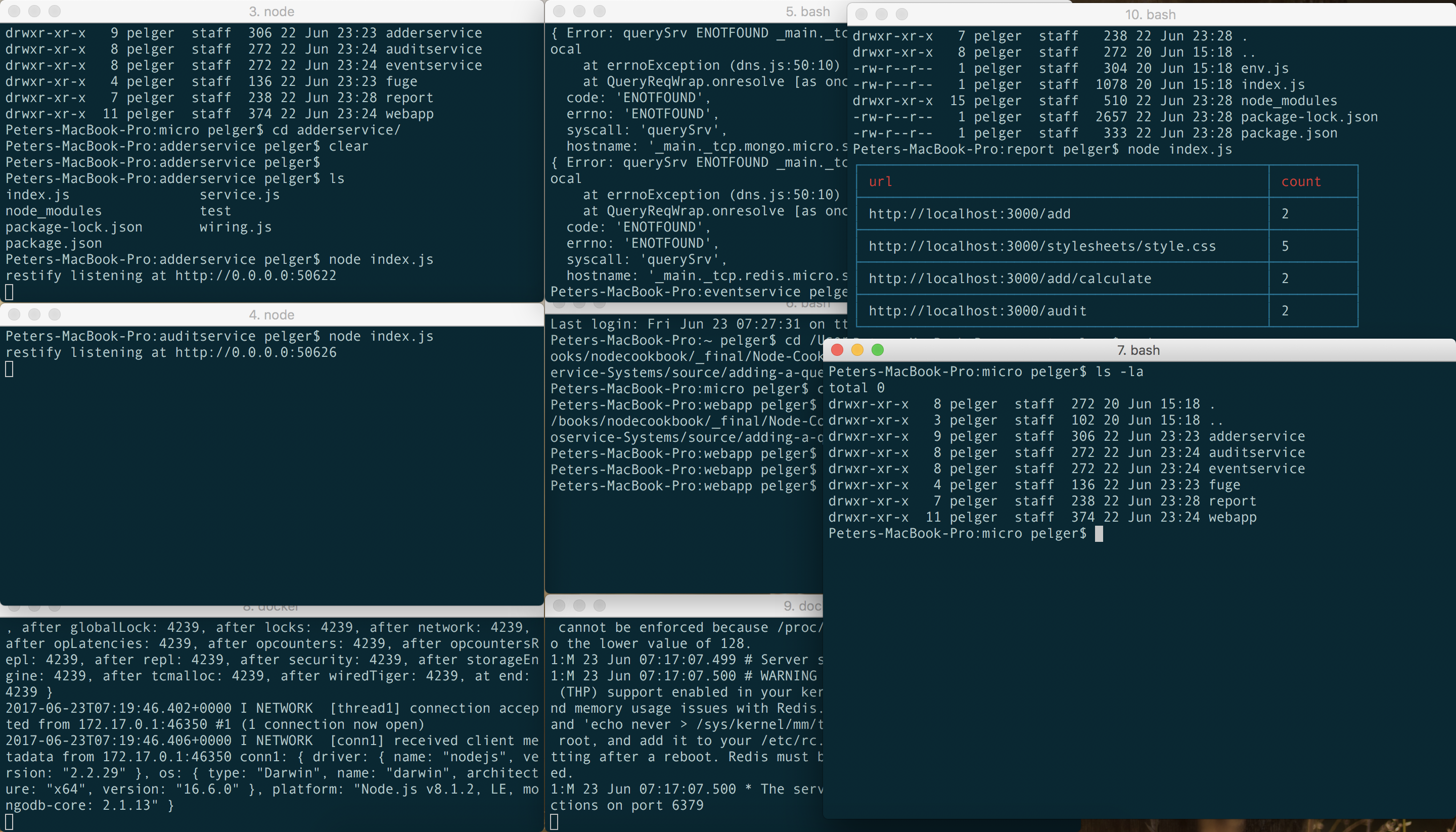Setting up a development environment
Microservice systems have advantages over traditional monolithic systems. However, this style of development does present its own challenges.
One of these has been termed Shell Hell. This occurs when we have many microservices to spin up and down on a local development machine in order to run integration and regression testing against the system, as illustrated in the following screenshot:

In this recipe, we're going to investigate a solution to this problem in the form of a microservice development environment.
Getting ready
Fuge is a toolkit written in Node.
It's designed specifically to help with local microservice development
Let's install Fuge with the following command:
$ npm install -g fugeOur micro folder from the previous recipe, Consuming a Service, is our starting point for this recipe.
How to do it...
Fuge needs a simple configuration file in order to take control of our development system, let's write it now.
We need to create a directory called fuge...































































